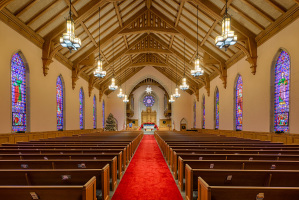Once You Go Multi-Site, You Won't Go Back
Among the healthy and growing churches in America today, they have already gone multi-site, are planning on going multi-site or are thinking about it, said a church strategist.
"Today, the multi-site model has become a viable instrument in the toolbox of the church," said Jim Tomberlin, founder of MultiSite Solutions.
Veteran "multisiters" with at least 10 years of experience in the "one church, multiple locations" approach came together Thursday to offer those exploring the model some advice.
Tomberlin went multi-site in 1997 when he was pastoring Woodmen Valley Chapel in Colorado Springs. Like other pioneers of multi-site campuses, Tomberlin found his church growing and running out of space. His church was already at a "great location" so the nondenominational congregation decided to launch a second campus in the same city.
"What began as a band-aid for megachurches that found themselves out of room or facing zoning restrictions quickly became a strategy for any healthy outreach-oriented church of all sizes," he said during Thursday's webinar, hosted by the Leadership Network.
Today, Tomberlin works full-time consulting churches across the nation on multi-site strategies. He has helped Willow Creek Community Church and other megachurches launch multiple campuses.
"Here we are today acknowledging that going multi-site isn't just adding another ministry or program to your church," he stressed. "It fundamentally changes everything – how we think and do church."
Veteran multisiters, including Robert Wright, chief operating officer of Eastern Star Baptist Church, in Indianapolis, Ind., agreed that expanding their church to multiple locations has allowed for more numerical growth and greater ability to reach more people with the Gospel.
The key, they said, was taking the church to the people rather than forcing them to drive long distances to the church.
The multi-site approach, Wright said, "gives us more of a biblical concept of New Testament evangelism where Jesus went straight to the people."
Members of Eastern Star have no more than a 15- to 20-minute drive to get to one of the church's three locations.
For Larry Osborne, pastor of North Coast Church in Vista, Calif., and one of the first to launch a video venue in 1998, going multi-site has opened opportunities to reach a more diverse audience.
"Every church kind of has a flavor and a feel and a culture," he said. "We no longer really have a common cultural experience. People live in niches by choice."
North Coast's three campuses, each with different worship styles and ambiences, reach a broad demographic, he said.
There are currently some 3,000 multi-sites in the country, up from 300 in the year 2000, according to A Multi-Site Church Road Trip. Most of today's largest and fastest-growing churches have multiple campuses, as Outreach magazine documents.
But before churches think about getting their feet wet in the multi-site model, Tomberlin cautioned that there should be a compelling reason or vision behind it.
"There needs to be a ... spirit-led reason for doing this not just [because] it's a trend or it's popular ... or even because we're out of space," he emphasized. "There's got to be a sense where God is leading us."
He added, however, that once churches dip their feet in the multi-site waters, they won't turn back.
"It can be a nightmare at times," he said, but "not many abandon the multi-site model once they start down that path."



























